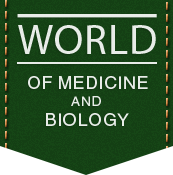Article
USE OF MUSCLE RELAXANTS IN THE COMPLEX TREATMENT OF LOW BACK PAIN SYNDROME
| About the author: | Meretskyi V. M. |
| Heading | CLINICAL MEDICINE |
| Type of article | Scentific article |
| Annotation | Almost every person of working age 30-35 years is experiencing episodic or acute manifestation of low back pain which is a major cause of temporary and permanent disability. The aim of the study was to evaluate the efficacy of combined drug tolperisone hydrochloride and lidocaine hydrochloride parenteral used in the treatment of patients with vertebral pain syndrome of the lumbosacral spine. 48 patients were examined in which was observed irradiating pain in the low back area for at least 2 months. Clinical vertebroneurological diagnostic examination with manual elements, common laboratory techniques, X-ray examination and magnetic resonance imaging of the lumbosacral spine were carried out. It was diagnosed: Radiculopathy of L4, L5 or S1 roots based on the clinical picture and X-ray data. Exclusion criteria included severe depression (diagnosed by a psychiatrist) and other psychiatric disorders, severe nephropathy, chronic alcoholism, pregnancy and lactation, surgery on the spine and infectious diseases. Other criteria for exclusion was the presence of concomitant pain of another type. The average age of patients was 45,96±0,1 years. Patients were divided into two groups depending on the therapy. Patients of the I (control) group was appointed a basic therapy: non-steroidal anti-inflammatory drugs, vitamin B complex, drugs that improve the microcirculation, regional and central hemodynamics, reduce venous stasis and tissue hydration. The course of treatment lasted for 7 days, all patients performed comprehensive examination on 1st and 7th day of observation. Patients of the II (main) group received traditional basic therapy with inclusion of combined drug tolperisone hydrochloride (muscle relaxant) and lidocaine hydrochloride intramuscularly at a dose of 1 ml 2 times per day for 7 days. At baseline, “spontaneous pain” and “pain on movement” (pain provoked by a passive movement induced by the investigator) were assessed by means of a 10-cm visual analog scale (VAS). McGill pain questionnaire was used to measure the sensory, affective and evaluative aspects of pain and pain intensity. To evaluate the violations of function at pain syndrome in the low back Oswestry questionnaire was used. All patients complained of pain and limited movement in the lumbosacral region. In some patients was recorded irradiation of pain in the gluteal area,in one or both legs, which intensified during movement, exertion, sneezing, coughing, in prolonged sitting and standing position. The pain combined with numbness in the area of irradiation, the appearance of muscle spasms. According to the examination (by VAS) in all patients pain averaged 7,48±1,24 points, which posted to strong before treatment. After treatment severity of pain by VAS tended to decline in the first group and significantly decreased by 56,7% (p <0,05) to the low level of pain in the second group of patients compared to data before treatment. Results of McGill pain questionnaire also indicated the decrease of the intensity of pain in the lower back area by 32 % in I and by 50,7 % in II group of patients (p<0,05). In patients receiving combined treatment with tolperisone hydrochloride and lidocaine hydrochloride, was found probable decrease of violation of daily function compared with those in the first group according to the Oswestry questionnaire, indicating the increase in capacity of patients to self-service. The results indicate the advisability of including combined drug tolperisone hydrochloride and lidocaine hydrochloride to the comprehensive treatment of vertebrogenic pain syndromes of the lumbosacral spine. |
| Tags | low back pain syndrome, muscle relaxant |
| Bibliography |
|
| Publication of the article | «World of Medicine and Biology» №3(51) 1 part 2015 year, 063-067 pages, index UDK 616.741-009.7-085.216.5 |
